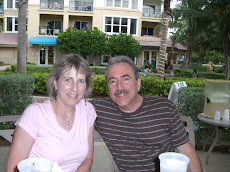
I was looking through one of my first journals today and found where I wrote an excerpt from Demian, by Hermann Hesse. ... "I nodded but was unable to make any comment. He began to bore me and I was startled that his evident need and despair made no deeper impression on me. My only feeling was: I can't help you." Hesse wrote this book in 1919 [under pen name Emil Sinclair] and I read it in the late 1960's... of course I read Siddhartha, Steppenwolf, Narcissus and Goldmund and others. Hesse was born in 1877 and published many works in the first half of the 20th century.
When I looked to see what Wikipedia says about Hesse, I found this interesting slice of how other artists related to his works, so I am including them in this blog today.
Herman Hesse in popular culture
The 1960/70s rock band
Steppenwolf named themselves after Hesse's novel, partly due to lead singer
John Kay's German origins.
The Volvos singer Heynes Arms wrote a song entitled "I Think I'm Herman Hesse". Like Hesse, Arms had German parentage and was born on July 2.
A portion of Herman Hesse's quote, "In each individual the spirit is made flesh, in each one the whole of creation suffers, in each one a savior is crucified," excerpted from his work
Demian: The Story of Emil Sinclair's Youth was included in the eighth episode of
NBC's television drama,
The Black Donnellys entitled "In Each One a Savior".
The
British progressive rock band
Yes was also influenced by the works of Hermann Hesse, especially on their 1972 album,
Close to the Edge, considered by most critics and fans to be their masterpiece.
Providence, Rhode Island based slam poet
Buddy Wakefield titled the first track of his 2006 album (
Run On Anything), "Healing Herman Hesse".
Washington DC based electronic duo
Thievery Corporation has a song on their album
Sounds from the Thievery Hi-Fi (1997) titled "The Glass Bead Game".
The UK Indie-Rock band
James makes reference to Hermann Hesse with their lyrics in the song "Crash" on the album
Millionaires: "Cut the Hermann free from the Hesse".
A song by the
English rock band
Blur, "Strange News from Another Star", from their 1997 album
Blur, takes its name from the title of Hesse's 1919 anthology of short stories,
Strange News from Another Star.
The New York band Suncrown recorded the song
Helen, which contains the lyric "I am Goldmouth lost deep in the forest", referring to the character from
Narcissus and Goldmund.
The American performance artist
Laurie Anderson mentions Herman Hesse and his grave in her spoken piece "Maria Teresa Teresa Maria" on the live album
The Ugly One With The Jewels. In it she mentions the disparity between his gravestone and that of his wife, Nina.
 I was interested in this story in Scientific American, but it was too scientific and not philosophical enough for me - seeing as the angst I suffer over finding the right way to explore so much.
I was interested in this story in Scientific American, but it was too scientific and not philosophical enough for me - seeing as the angst I suffer over finding the right way to explore so much.

 I was looking through one of my first journals today and found where I wrote an excerpt from Demian, by Hermann Hesse. ... "I nodded but was unable to make any comment. He began to bore me and I was startled that his evident need and despair made no deeper impression on me. My only feeling was: I can't help you." Hesse wrote this book in 1919 [under pen name Emil Sinclair] and I read it in the late 1960's... of course I read Siddhartha, Steppenwolf, Narcissus and Goldmund and others. Hesse was born in 1877 and published many works in the first half of the 20th century.
I was looking through one of my first journals today and found where I wrote an excerpt from Demian, by Hermann Hesse. ... "I nodded but was unable to make any comment. He began to bore me and I was startled that his evident need and despair made no deeper impression on me. My only feeling was: I can't help you." Hesse wrote this book in 1919 [under pen name Emil Sinclair] and I read it in the late 1960's... of course I read Siddhartha, Steppenwolf, Narcissus and Goldmund and others. Hesse was born in 1877 and published many works in the first half of the 20th century.

